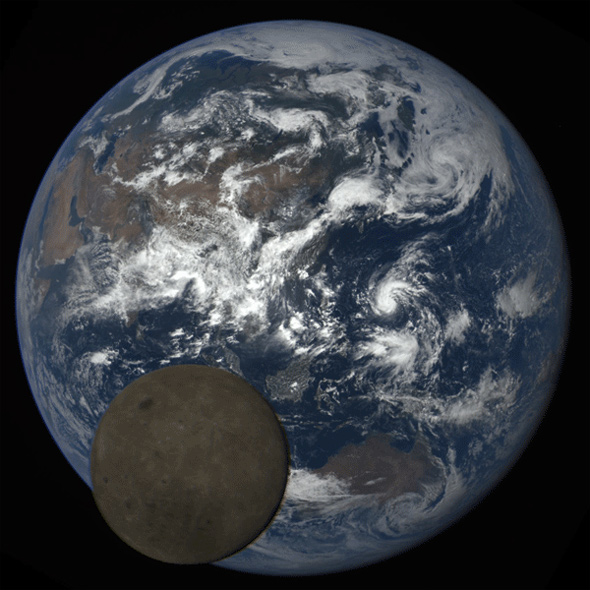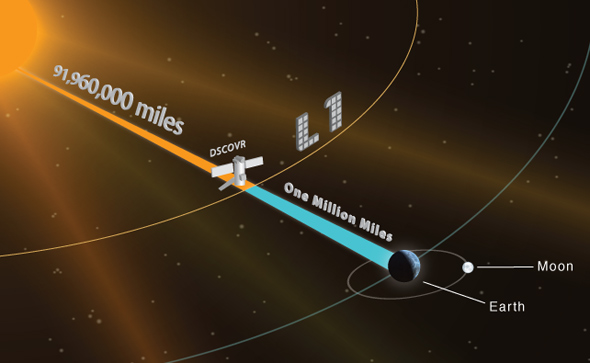Moon Photobombs Earth
NASA’s Deep Space Climate Observatory, or DSCOVR, is a satellite that orbits the Sun about 1.5 million km from the Earth. That’s a (meta)stable orbit that keeps it between the Sun and Earth, so that when it looks at our planet, it sees its fully illuminated face.
A couple of times per year the dances of the Earth, Moon, and DSCOVR line up so that it sees the Moon pass directly in front of the Earth. And when it does, it’s actually pretty magical:
Yes, this is a real animation, and not a simulation. It’s composed of images taken by DSCOVR on July 5 (a similar transit was seen in 2015). There’s a lot to see here! You may have noticed the Moon looks much darker than Earth. That’s real. The Moon on average reflects about 15 or so percent of the sunlight that hits it; the Earth is much shinier, reflecting closer to 40 percent.
The Moon looks funny, doesn’t it? Where are all the usual features you see in photos? They’re on the other side. The Moon spins once every orbit, so it always keeps the same face toward Earth. DSCOVR orbits the Sun farther away than the Moon orbits the Earth, so when the Moon passes between the satellite and Earth it sees what we would call the Moon’s far side. And because the Sun is behind DSCOVR, the Moon and Earth are both full. Or very nearly; it’s slightly off line, so you can see a bit of the unilluminated part of the Moon and Earth, both on the right. This means that if you were on Earth looking at the Moon, it would have been up during the day, and very close to its new phase.
Also, just above the Moon’s path, to the right of center on the Earth, you can see the ominous swirling spiral of Typhoon Nepartak. This powerful storm swept over Taiwan and China, killing many people and doing extensive damage. Weather events like this are terrifying and devastating, but from so far away they’re disturbingly beautiful; it’s one of the most persistent and dark ironies of space exploration.
A large part of DSCOVR’s mission is to raise public awareness of our planet, and how important observing it from space is. Sure, it’s pretty cool when the Moon photobombs Earth, but there’s much more going on with these images. I suggest you explore them for yourself, and take a look at our planet … and see that it really is a planet, one of countless many, but for us the most important. For at least a little while longer, it’s the only one we live on.




